Meade's LX65 mount and ACF (Advanced Coma-Free) 8-inch telescope comes with a stainless steel tripod, 26mm eyepiece, red dot finder, star diagonal, bubble level with compass, and a DVD with planetarium software.
The LX65 mount is a single straight arm alt-azimuth Go-To mount, powered either by eight C-type batteries or an external 12V power source.
There are two Vixen-style saddles; the main one for holding the supplied telescope and an additional one on the outer side for a second telescope that weighs up to 3.2kg.
This second saddle can be adjusted to line up the view exactly with the primary instrument.
It’s ideal for adding a rich field refractor to give wide views of the same target.
The mount is sturdy despite its outer plastic casing, which looks good in the blue livery complementing the optical system.
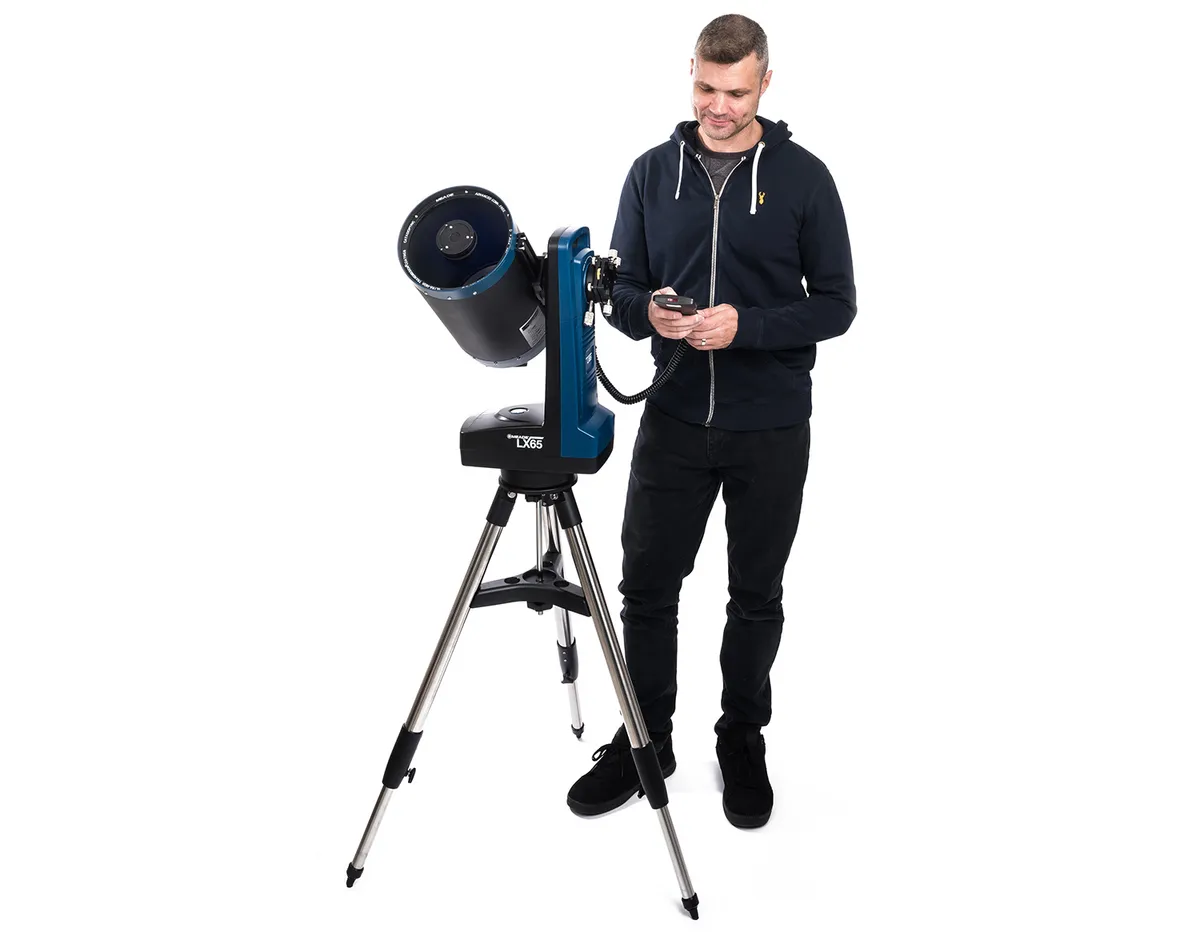
Controlling the mount and providing functionality is the AudioStar hand controller.
This plugs into the topmost of the ports on the back of the mount arm, clearly labelled HBX.
A removable bracket allows the hand box to be attached to the mount for convenience.
The AudioStar features 30,000 objects covering all the main catalogues of deep-sky targets such as Messier, Caldwell, NGC and IC, along with Solar System targets of the planets, asteroids and comets.
Other options include named stars, variables and doubles along with the choice to take a tour of ‘Tonight’s Best’ – which automatically selects the best night-sky objects for that time and location – so there is plenty to explore.
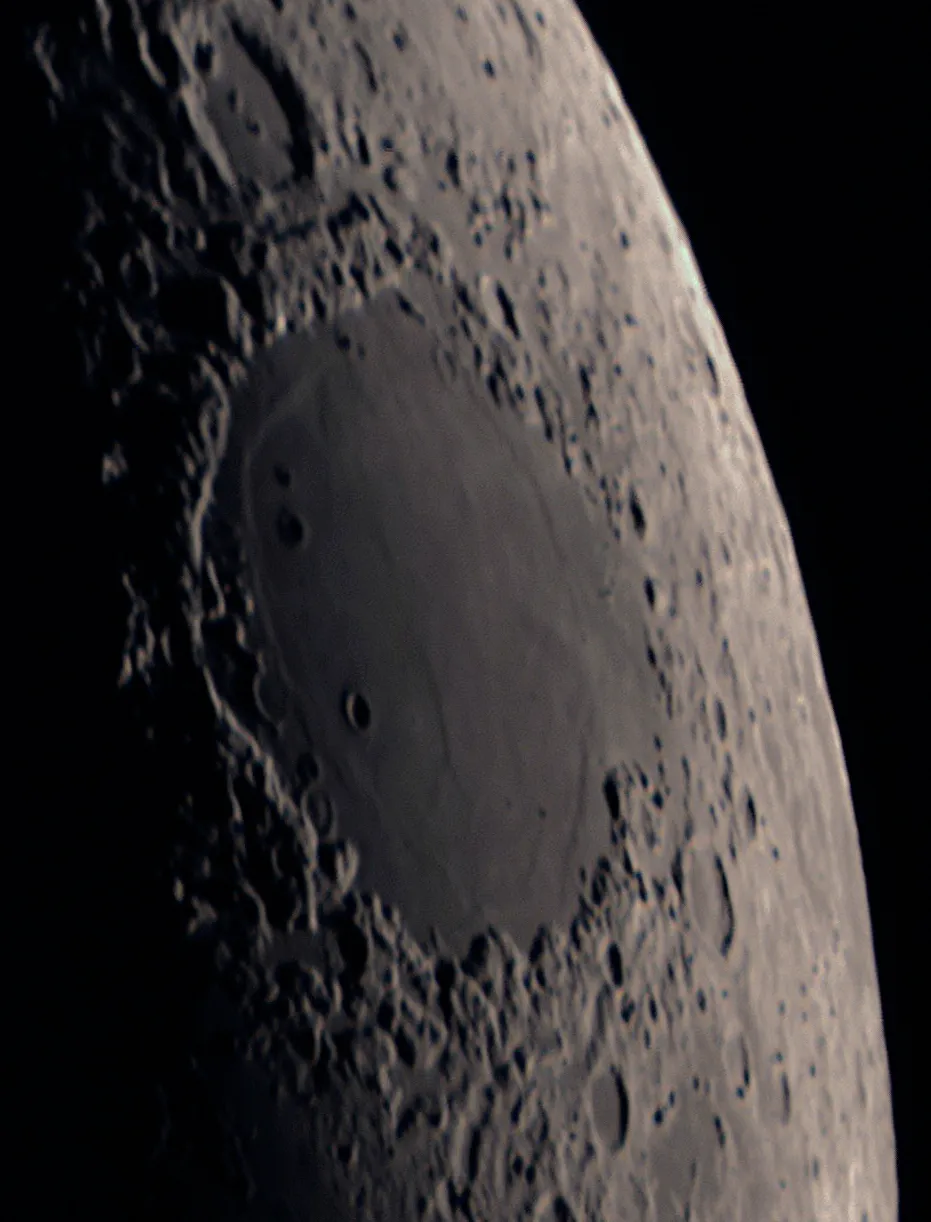
The AudioStar also features audio voiceovers for 500 objects in the database.
The optical tube is a Meade ACF catadioptric telescope with a diameter of 203mm (8 inches) and a focal length of 2,032mm giving a focal ratio of f/10.
Combined with the supplied 26mm Series 4000 Super Plössl eyepiece, it gives a magnification of 78x.
In our visual test of the field of view it was pin sharp across the whole view – indeed, we also used our 32mm eyepiece, giving 63.5x, and it was still sharp to the edge.
We set up and followed the instructions for levelling the system and chose the two star Easy Align option.
Once alignment was complete, we found all our chosen targets reasonably close to the centre of the view of the 26mm eyepiece.
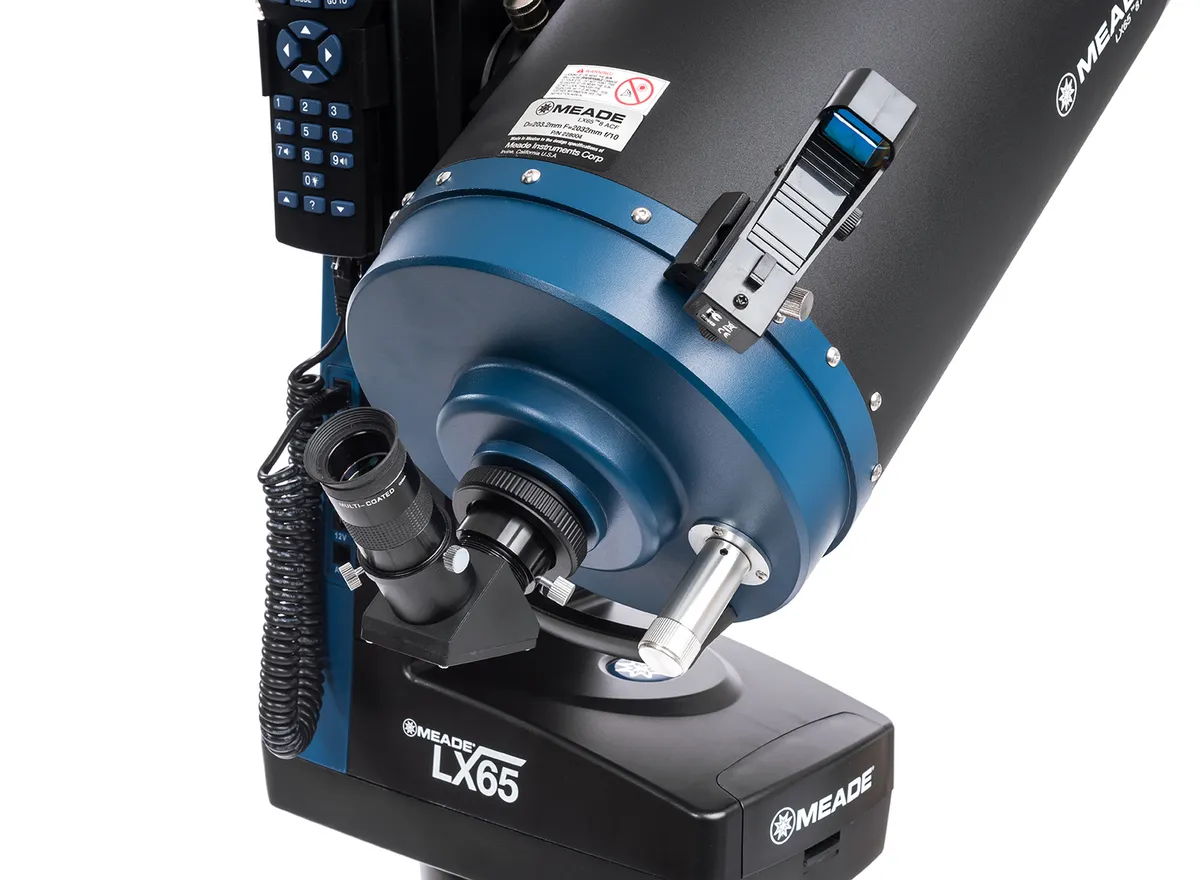
We took a tour of the double stars on offer and were impressed with the vivid colours the optics gave of Albireo, which at 78x was lovely and wide.
Jupiter suffered from some low haze, but clearly showed belts, a hint of the Great Red Spot and plumes in the North Equatorial Belt, along with its four Galilean moons.
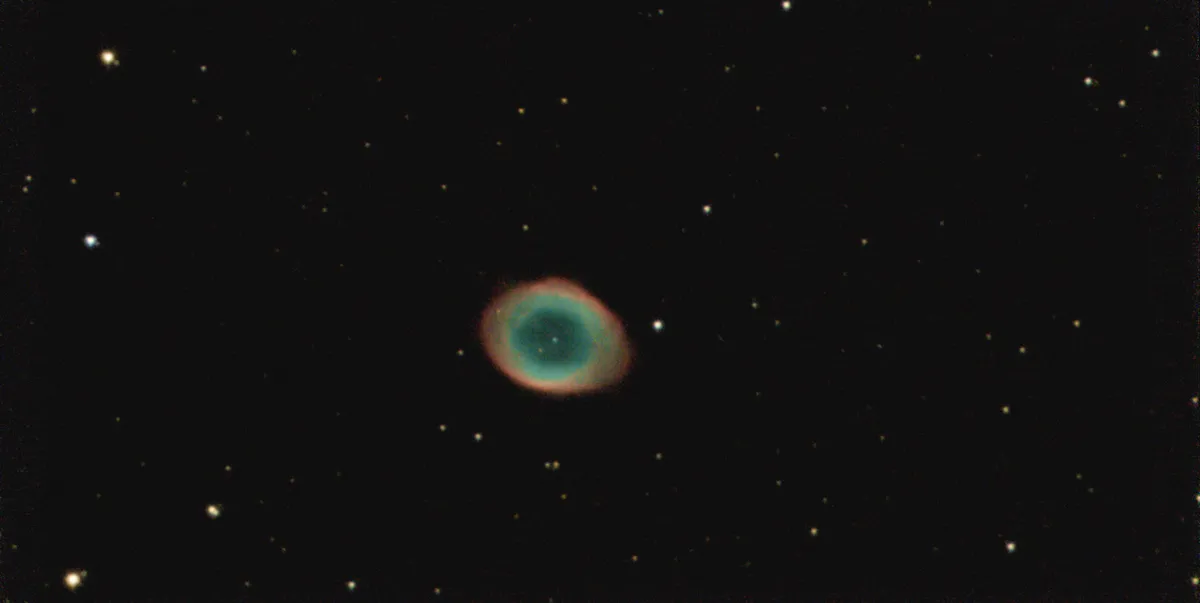
Saturn was slightly better.Using our own higher power eyepieces, we could see the Cassini Division, north polar haze and northern belt, as well as carefully spotting four of its moons.
A week later the Moon was viewable and there were plenty of stunning craters to wow us.
The light summer nights made hard work of deep-sky objects, but we enjoyed a tour of M27, M57, M11, M13 and M3, along with just about getting the Double Cluster with the 26mm eyepiece and spotting the galaxy pair of M81/82, each in a separate view.
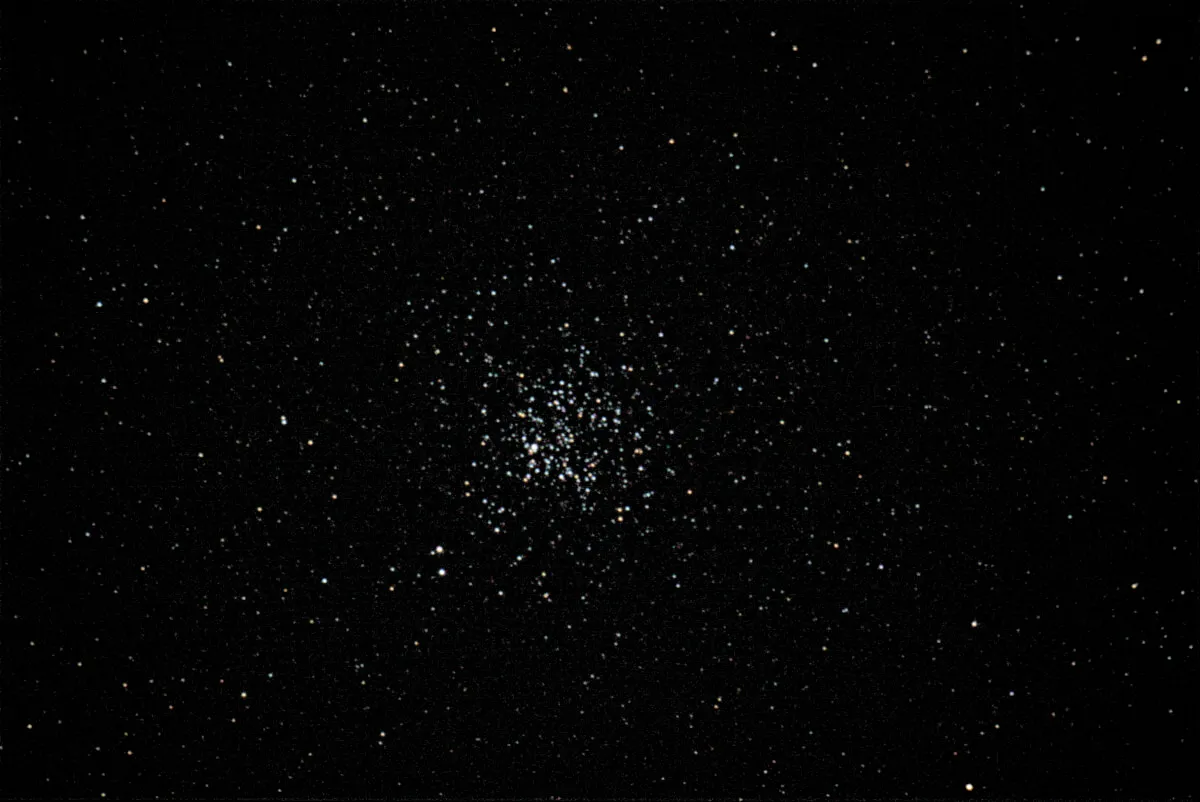
Although you can easily image the Moon and brighter planets with this system, it is not primarily marketed for astrophotography.
Yet, with the advancement of cameras – DSLR and CMOS or CCD – it is now possible to capture deep-sky images of brighter targets, using short exposures, high ISO values and stacking techniques.
We took images of the Moon using a webcam and smartphone, and used our GPCAM 290C CMOS camera and Canon 50D DSLR to image a few deep-sky targets with interesting results (see above).
Indeed, the LX65 Series 8-inch ACF is a capable system and we enjoyed using it.
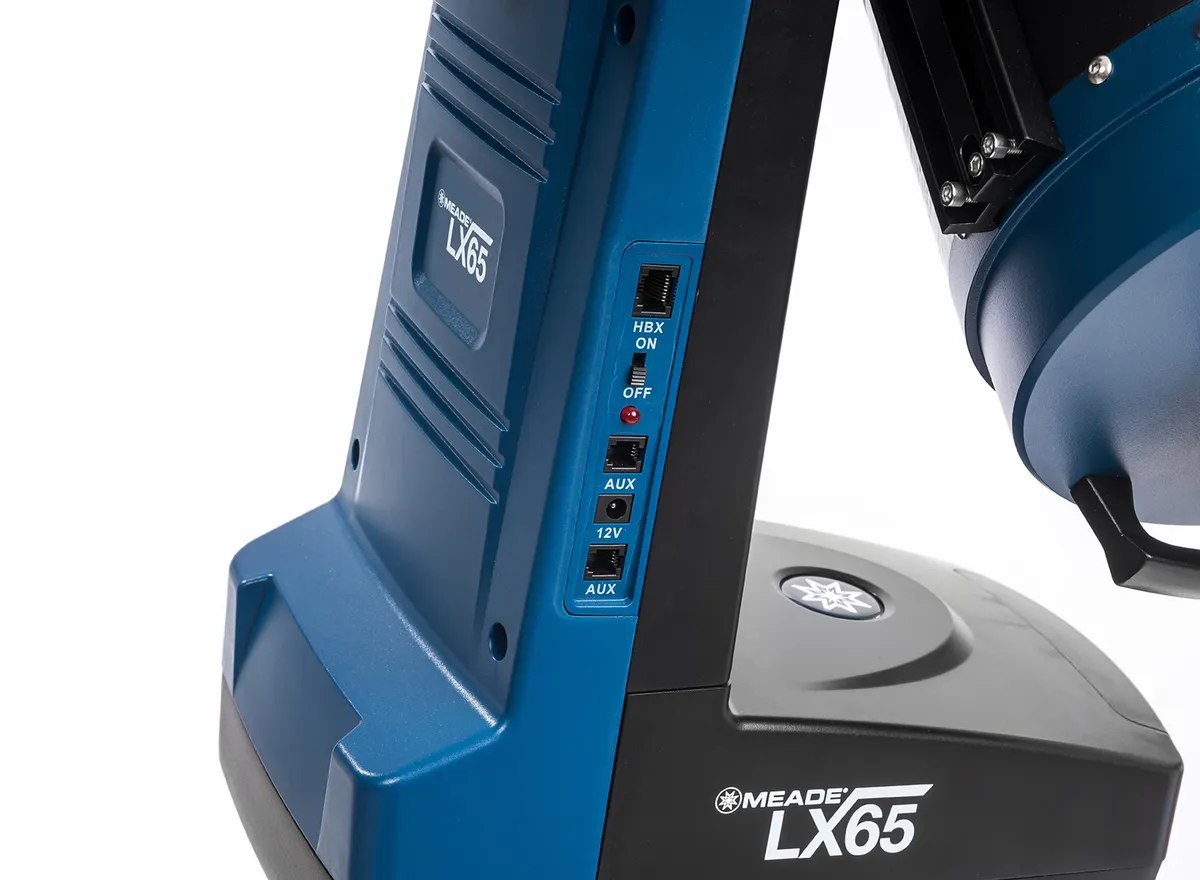
Optimal optics
The 8-inch ACF is a catadioptric telescope with Meade’s own specification Advanced Coma-Free (ACF) optics.
This gives a flatter, coma-free surface right to the field edges and uses a slightly larger Borosilicate glass primary mirror with Ultra-High Transmission Coatings for brighter views of your targets.
It has an 8-inch (203mm) primary mirror with a focal length of 2,032mm giving f/10, technically making this a ‘slow’ system.
This means that, for any given eyepiece, the magnification provided is higher than with a shorter focal length system such as f/5 or f/6.
However, this makes it ideal for high-resolution planetary and lunar viewing or imaging yet still gives good views of a wide range of deep-sky targets, especially double stars.
The catadioptric design makes such a long focal length quite compact, meaning that transportation and use are easier, with the optical tube assembly only weighing 5.5kg.
It performs well, but a dewshield should be added as the front corrector plate can dew up if you don’t have access to a dew heater.
Finder, eyepiece and diagonal
The finder is a zero-magnification Red Dot Finder with variable brightness. It worked well, but could dew up over prolonged periods. A star diagonal and a Series 4000 26mm/1.25 inch eyepiece, giving a useful magnification of 78x, are included. The focuser is at the back of the tube and was smooth in use.
Ports
On the rear of the L-shaped mount are various ports: HBX for the AudioStar hand controller (Meade call it the Handbox), with the on/off switch and red LED indicator light coming next. Either side of the 12V power connection port are two aux inputs for Meade accessories and future enhancements.
Tripod and holders
The steel tubular-legged tripod provides good support for the LX65 and has adjustable legs, allowing for a range of heights for a more comfortable viewing position. The eyepiece spreader tray gives the tripod rigidity and can hold three 1.25 inch eyepieces for easy swapping in use.
AudioStar hand controller
The AudioStar hand controller is easy to use and has a database of 30,000 objects. It features an in-built speaker and audio descriptions for many of the brighter objects, adding an extra dimension to your viewing pleasure.
LX65 alt-az Go-To mount
The base contains the electronics and gears for alt-az operation and a battery compartment. Although it’s a single arm design, it can carry two telescopes via the Vixen-style saddles. It has an integrated carry handle and the hand controller can be attached for ease of use.
Vital stats
- Price £1,315
- Optics 203mm (8-inch) SCT with Advanced Coma-Free (ACF) optics
- Focal length 2,032mm, f/10
- Mount Single arm alt-azimuth
- Hand controller AudioStar
- Database Over 30,000 objects, including IC, Messier, NGC and more
- Weight 18kg
- Supplier OpticStar
- Tel 0161 969 9008
- www.opticstar.com
